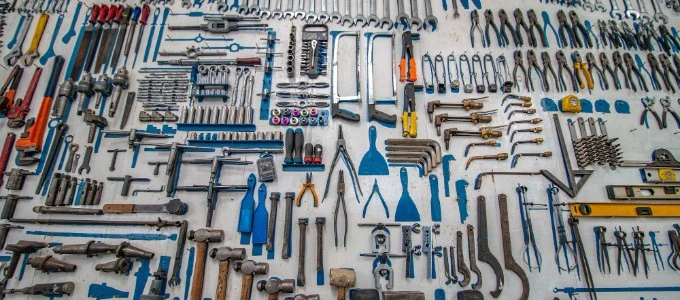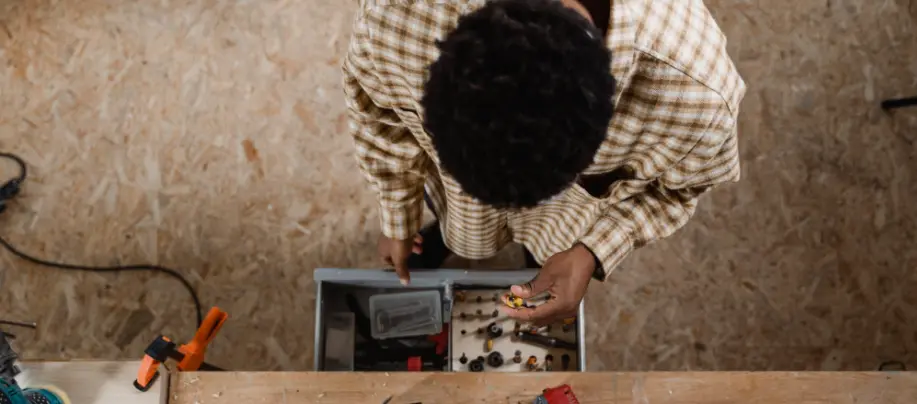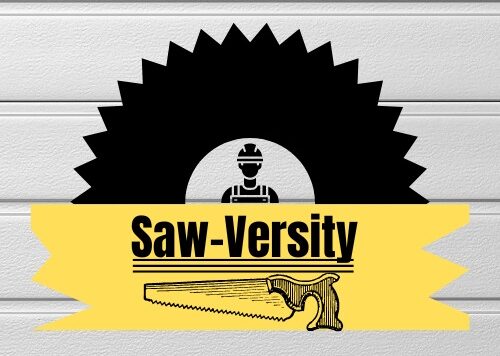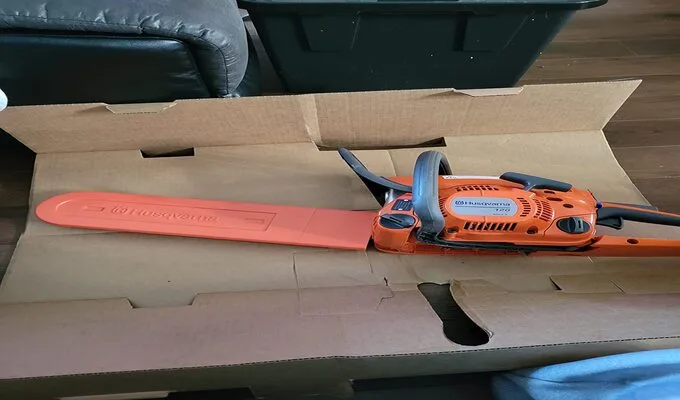Are you a chainsaw enthusiast looking to get the most out of your tool? If so, you’ve probably heard about porting chainsaws. Porting a chainsaw is the process of modifying your chainsaw’s engine for better performance and increased power output. In this blog post “How to port a chainsaw”, we’ll guide you through everything you need to know to successfully port your own chainsaw. From understanding the anatomy of a chainsaw to troubleshooting common issues and mistakes, we’ve got you covered. It’s an advanced technique that can be tricky to master, but with some guidance and practice, anyone can do it. So put on your safety gear and let’s get started!
Process of How to Port a Chainsaw
Chainsaw porting is the process of modifying the intake and exhaust passages of a chainsaw’s engine to improve performance. The goal of porting a chainsaw is to increase its power output, acceleration, and overall speed by allowing more air and fuel mixture into the combustion chamber.
The process begins by disassembling the chainsaw engine and removing the cylinder head for access to the ports. Once you have accessed the intake and exhaust ports, you can start grinding them down with specialized tools that are designed for precision work.
Porting requires careful measurement and shaping using various grinding bits such as stones or carbide cutters. Once completed, it’s time to tune up your saw with new jets in its carburetor settings along with timing adjustments on its flywheel keyway position before testing how much faster it cuts now!
It’s essential not to overdo this process since too much material removal can lead to poor compression ratios resulting in lower performance gains than expected if done properly. Always be cautious when working on your saw, especially if you’re doing so for the first time.
Chainsaw porting can seem daunting at first but is an excellent way to upgrade your trusty tool’s cutting abilities without having to buy a whole new one!
Benefits of porting a chainsaw
Porting a chainsaw is an advanced modification process that involves reshaping the intake and exhaust ports of the engine. While it’s not for everyone, there are several benefits to porting your chainsaw.
One significant advantage of porting a chainsaw is improved power output. By increasing the size and shape of the intake and exhaust ports, you can allow more air and fuel into the engine, resulting in higher horsepower and torque output.
Another benefit of porting a chainsaw is increased efficiency. A properly ported saw will run smoother with less resistance in its airflow system leading to better fuel economy while reducing emissions at the same time.
Porting also helps reduce overheating by improving cooling capacity within your tool as modifications like these make sure that heat generated due to combustion doesn’t stay trapped inside but escapes from every opening possible allowing for cooler operation
If done correctly, modifying your tool through porting can extend its lifespan. This transformation encourages constant maintenance checks thereby keeping other parts working optimally and promoting long-term sustainability.
If you’re looking to improve cutting performance or increase efficiency & longevity on your saw machine then consider investing some time in learning how to modify it through proper channels such as Chainsaw Porting!
Chainsaw Anatomy and Functioning
To understand how to port a chainsaw, it’s important to know the chainsaw’s anatomy and functioning. A typical chainsaw consists of several parts, including the engine, carburetor, chain brake system, clutch assembly, and bar and chain.
The engine is responsible for converting fuel into mechanical energy that powers the saw’s chain. The carburetor controls the mixture of air and fuel that enters the engine. The chain brake system ensures safety by halting the rotation of the cutting chain in case of kickback.
The clutch assembly transfers power from the engine to the drive sprocket which then rotates a chain around a guide bar with sharp teeth used for cutting wood or other materials.
Chainsaws also have oiling systems that lubricate both internal components like piston rings as well as external moving parts like chains.
Understanding how each part works together is essential in determining where specific modifications need to be made during porting such as increasing exhaust ports or enlarging transfer channels.
Understanding these basics will give you a better idea of what needs modification when modifying your machine with more advanced techniques later on down the line!
How to Port a Chainsaw
Common tools and equipment required for porting chainsaw

Before you begin the chainsaw porting process, it’s essential to have all the necessary tools and equipment on hand. Here are some of the common tools required for porting a chainsaw:
Firstly, you will need a set of wrenches to loosen and tighten bolts on the chainsaw. You would also require a torque wrench to ensure that everything is tightened correctly.
A die grinder with carbide cutters or burrs is another tool needed when doing cylinder work. It helps in cutting through metal smoothly.
Porting templates are used as guides during the porting process; they help to achieve precise cuts and ensure uniformity across different ports.
To measure your progress throughout this process, micrometers are crucial components for measuring bore size accurately.
Safety gear such as goggles, gloves, and ear muffs should be worn at all times while working with power tools like grinders.
Having these tools within reach before commencing any work saves time since you do not need interruptions going back and forth fetching them from storage areas.
Preparing for Chainsaw Porting

Before you start porting your chainsaw, it’s important to prepare yourself and your workspace. First, make sure you have all the necessary tools and equipment. This includes safety gear such as eye protection, gloves, ear protection, and a dust mask.
Next, choose a clean and well-lit area for working on your chainsaw. Make sure there’s enough space to spread out your tools and parts without cluttering the area.
Before disassembling the chainsaw, take some time to read through the manufacturer’s instructions or manual. Familiarize yourself with the different parts of the saw and how they function together.
It’s also important to inspect each part of the saw before starting any work. Check for any cracks or signs of wear that may need repair or replacement before proceeding with porting.
Ensure that you have enough time set aside for completing this project. Rushing can lead to mistakes which could be dangerous when operating heavy machinery like a chainsaw.
Taking these steps in preparing for chainsaw porting beforehand will help ensure a successful outcome while keeping both you and your tool safe from harm during the operationrk saves time since you do not need interruptions going back and forth fetching them from storage areas.
Disassembling the Chainsaw
It is crucial to disassemble the chainsaw. This step ensures that all parts are accessible and exposed for porting modifications to be made easily.
To start disassembling the chainsaw, ensure that you have a workspace with ample room to lay out all parts. Begin by removing the chainsaw’s housing cover and air filter; these should come off quickly with a few screws or bolts.
Next, remove the spark plug wire from its connection point on the saw’s engine cylinder head. Be sure to set this aside in a safe place where it won’t get damaged or lost during reassembly.
Once you’ve removed these key components, take note of any other fasteners holding your chainsaw together and begin loosening them accordingly. A helpful tip is always to keep track of which part came from where since there will be many small pieces involved in this process.
As you continue taking apart your chainsaw, keep an eye out for any signs of wear or damage on individual parts such as bearings or seals so that they can be replaced if necessary during reassembly.
Remember never to rush through this process as it could lead to further damage resulting in costly repairs later on down the line!
Understanding the Porting Process
Understanding the porting process is crucial for anyone who wants to modify their chainsaw’s performance. Porting involves removing material from various parts of the engine, including the cylinder and piston, to improve airflow and increase power output.
One important thing to keep in mind when porting a chainsaw is that it requires precision and attention to detail. Even small mistakes can result in poor performance or even damage to your saw. That’s why it’s essential to have a clear understanding of what you’re doing before you start.
Porting typically involves using specialized tools like grinders, sanders, and carbide bits. These tools allow you to carefully remove material from specific areas of the engine without causing any damage.
It’s also important to understand how different types of ports work together within your engine. There are several different types of ports used in chainsaws, each serving a specific purpose in improving airflow through the engine.
Understanding the porting process is an essential part of achieving optimal performance from your chainsaw. With proper knowledge and some patience, anyone can learn how to successfully port their saw for improved power output and efficiency.
Porting the Cylinder
Porting the Cylinder is a crucial step in chainsaw porting. This process involves modifying the intake and exhaust ports in the cylinder to increase airflow, which leads to improved performance.
To begin porting the cylinder, you’ll need to remove any carbon buildup and debris from inside the cylinder using a wire brush and sandpaper. Once cleaned, use a rotary tool or hand file to enlarge and smooth out both intake and exhaust ports.
When working on each port, it’s important not to remove too much material as this can weaken the structural integrity of the cylinder. Always take your time when filing or grinding as it’s easy to make mistakes that could damage your saw.
Once you’ve finished with both ports, carefully clean out any metal shavings before reassembling your chainsaw. Remember that proper tuning is essential after completing any modifications like porting.
While Porting the Cylinder may seem daunting at first glance for some users who are new at this kind of modification work on their chainsaw; however, with patience and care, anyone can do it!
Porting the Piston and Rings
After porting the cylinder, it’s time to move on to porting the piston and rings. This step is crucial as it helps in improving airflow and fuel efficiency in your chainsaw.
Firstly, you need to remove the piston from its connecting rod by unscrewing the bolts that hold them together. Once done, take out the wrist pin and slide out the piston carefully.
Next, inspect all parts of the piston for any signs of wear or damage. If there are any visible issues, replace them with new ones before proceeding further.
Now comes the actual process of porting. Use a Dremel tool with an appropriate bit to smooth out any rough edges on both sides of each ring groove. Be careful not to remove too much material as this can cause problems later on.
Once you’ve finished smoothing out all ring grooves, use a sandpaper roll or a hone brush to clean up and polish each one until it’s shiny and smooth.
Reassemble your chainsaw by putting back together all parts in reverse order from disassembly. Don’t forget to lubricate everything properly before starting up your newly-ported chainsaw!
By following these steps carefully while porting your chainsaw’s piston and rings section, you’ll notice significant improvements in its performance and overall power output!
Reassembling the Chainsaw
Now that the porting process is completed, it’s time to reassemble the chainsaw. This step requires careful attention and patience as you want to ensure all parts are properly aligned for optimal functioning.
Start by placing the piston back into the cylinder with new rings if needed. Make sure to lubricate everything using oil before putting any of these components back together. Once this is done, attach the crankshaft carefully while ensuring proper alignment.
Next, replace all gaskets and seals with new ones before returning all other parts back in place such as the carburetor, muffler, and clutch assembly among others.
Make sure every screw or bolt is tightened correctly but avoid overtightening which could cause damage or cracking on certain parts of your chainsaw. Install a new spark plug too before testing your machine again.
Reassembling a chainsaw after porting may seem daunting at first but following these steps will make it much easier for anyone willing to attempt this task.
Tuning the Chainsaw
Tuning the chainsaw is a critical part of the porting process. Without proper tuning, your newly ported chainsaw won’t perform at optimal levels. Tuning involves adjusting various components to ensure that everything runs smoothly and efficiently.
Firstly, you need to adjust the carburetor. This controls the fuel and air mixture going into the engine. A lean mixture will cause overheating and damage to your saw while a rich one results in poor performance.
Next, you need to check the spark plug as it’s responsible for igniting fuel inside the cylinder. If it’s dirty or worn out, replace it with a new one right away.
After that, check your chain tension as this can affect how well your saw cuts through wood. Adjust it accordingly to improve its performance.
Ensure that all bolts on your chainsaw are tightened correctly before testing it out in action.
Tuning is an essential step towards getting more power and efficiency from your saw after porting it properly!
Testing the Chainsaw
After finishing your chainsaw porting process, it’s important to test your work. Testing the chainsaw helps you determine if it’s functioning properly and whether or not there are any issues that need to be addressed.
Start by checking for proper fuel flow and spark plug function. If these two factors aren’t working correctly, then there is no point in testing anything else just yet. Once fuel and spark are confirmed as functional, start up the chainsaw and listen closely for any unusual sounds.
Check if the throttle response is smooth when revving the engine. Ensure that chain oiler ports are working correctly too. Then take a few cuts on some lumber to see how well it performs under load conditions.
If everything works well during testing, congratulations! You’ve successfully ported your chainsaw with no problems at all. However, if something doesn’t seem right or feels off about its performance after testing, then you may need to adjust some settings or look into additional repairs before using it again.
Remember always to follow safety procedures when operating a chainsaw for both testing purposes and regular use after porting.
Maintenance and Care
Maintenance and care are crucial for keeping your chainsaw in top condition after porting it. One of the best ways to maintain your chainsaw is by cleaning it regularly. This involves removing any dirt, debris, or sawdust that may have accumulated on the machine.
Another aspect of maintenance involves checking the air filter frequently. This helps to ensure that there is no blockage or damage that could hinder its performance. You should also inspect the fuel system, including the fuel filter and lines, for any signs of wear or contamination.
It’s also important to keep an eye on the chain tension and sharpening needs as this will help prevent accidents while using your chainsaw post-porting. Make sure you oil it frequently too – every time you use it would be a good idea! Also, check if there are any visible leaks from your saw while operating it – identify where they come from so you can take appropriate action immediately.
Store your chainsaw properly when not in use by storing it in a dry place where moisture cannot cause rust buildup on metallic parts such as pistons and cylinders. With proper maintenance and care after porting your chainsaw, you can enjoy its optimal performance over many years to come!
Common Chainsaw Porting Mistakes to Avoid
Porting a chainsaw can be an exciting project, but it’s important to avoid common mistakes that could ruin your hard work. Here are some common chainsaw porting mistakes to avoid:
Firstly, make sure you don’t go overboard with the porting process. If you remove too much material from the cylinder or piston, it can weaken the engine and cause irreparable damage.
Another mistake to avoid is using inappropriate tools for the job. Using a Dremel or other rotary tool may seem like a quick solution, but they’re not designed for heavy-duty tasks like chainsaw porting. Instead, invest in high-quality files and grinding stones specifically made for chainsaws.
It’s also essential to pay attention to timing when porting your saw. You need to ensure that each component is correctly aligned before making any adjustments; otherwise, you may end up reducing power instead of increasing it.
After completing the project, don’t forget about the proper tuning and maintenance of your newly-ported saw. Neglecting these critical steps will prevent you from getting optimal performance out of your machine.
By avoiding these common mistakes during the chainsaw porting process – excessive removal of materials from cylinder/piston components; use of inappropriate tools; poor timing during adjustment; failure to properly tune & maintain equipment – you’ll end up with a reliable and powerful saw that gets even better results than before!
Troubleshooting Chainsaw Porting Issues
After porting your chainsaw, you may encounter several issues that affect its performance. One of the most common problems is overheating due to improper air or fuel mixture. If your chainsaw engine runs hot after porting, you should adjust the carburetor settings and ensure that there are no air leaks in the system.
Another issue that may arise is reduced power output or RPMs. This could be caused by a poorly done port job, leading to decreased compression and weaker overall performance. In this case, you will need to diagnose the problem and redo the porting process if necessary.
Excessive vibration during operation can also be a sign of poor porting work as it puts extra strain on components like bearings and seals leading to premature wear and tear. You should inspect all moving parts for any signs of damage or looseness before operating again.
If your chainsaw has difficulty starting after porting, check for any loose connections around spark plug wires or ignition coils. Additionally, uneven idling can often be fixed by adjusting the idle speed screw on carburetors which may have been impacted during the modification process.
If you experience any other issues with your chainsaw’s performance following a porting procedure, consult an experienced technician who can help troubleshoot further problems based on their expertise in this field of work.
Conclusion
After reading through this comprehensive guide on how to port a chainsaw, you should now have a good understanding of the process involved. Porting your chainsaw can significantly improve its performance and increase its power output, making it easier for you to handle tough cutting tasks.
By following the steps outlined in this article, you’ll be able to disassemble your chainsaw safely, understand the porting process and reassemble it correctly. Additionally, we’ve provided helpful tips on tuning your newly-ported chainsaw and maintaining it properly.
It’s important to note that while porting a chainsaw can bring many benefits, there are also risks involved. Make sure you have all the necessary tools and equipment before starting the process, and always follow safety guidelines carefully.
With patience and attention to detail, you can successfully port your own chainsaw without having to spend money on professional services or buying an entirely new machine.
Remember: practice makes perfect! If at first, you don’t succeed in achieving optimal results with your newly-ported chainsaw, take some time to troubleshoot any issues before trying again. Happy sewing!
Why trust us
We hope that this guide has provided you with a comprehensive understanding of how to port a chainsaw. By following the steps we have outlined, you can effectively boost your chainsaw’s performance and get more out of your tool.
Remember that as with any DIY project, it is essential to prioritize safety and take the necessary precautions before embarking on a chainsaw porting process.
If you’re still unsure about whether or not to port your chainsaw or need assistance in doing so, don’t hesitate to consult an expert. It’s always better to be safe than sorry when it comes to making modifications like these.
At sawversity.com, we are dedicated to providing our readers with accurate and helpful information related to all things outdoor power equipment. Our team comprises experienced professionals who possess extensive knowledge in this field, ensuring that our readers receive reliable guidance on their projects.
We trust that this article has been helpful for you in understanding how to port a chainsaw thoroughly. For further inquiries or requests for specific topics related to outdoor tools, feel free to contact us at info@sawversity.com.
FAQs
Whether porting a chainsaw will increase its power and performance?
Yes, by opening up the airflow in the engine, you can enhance the power output of your saw.
How much time does it take to complete the porting process?
Well, it depends on several factors such as your experience level and familiarity with the tools/equipment required for the job. However, on average, porting could take anywhere from a few hours to an entire day or more.
Do I require special skills or training before attempting this task at home?
While having prior knowledge in mechanics and DIY projects would be helpful, anyone with basic mechanical aptitude and attention to detail can follow these steps safely
What kind of maintenance does a newly-ported saw require?
Regular maintenance practices like cleaning air filters regularly and changing spark plugs when necessary should suffice. However, if you notice any issues while using your newly-porter saw make sure to troubleshoot immediately before any damage occurs.
Read Next


